Operation
T he WWI marine growth prevention system has proved to be an effective and reliable method of eliminating blockages caused by bio-fouling.
- Based on the electrolytic principle, providing continuous and reliable protection without the use of chemicals.
- A dual system combining pipework anti-fouling and corrosion suppression.
- Every system custom designed for its particular application ensuring greater effectiveness.
- Automatic operation – requires minimal attention and makes very little demands on crew time.
- Easy installation – electrodes can be installed in seachests or strainers at newbuilding or retrofit.
- Environmentally friendly – does not involve the use of chlorine based chemicals or carcinogens.
- Approved by classification societies.
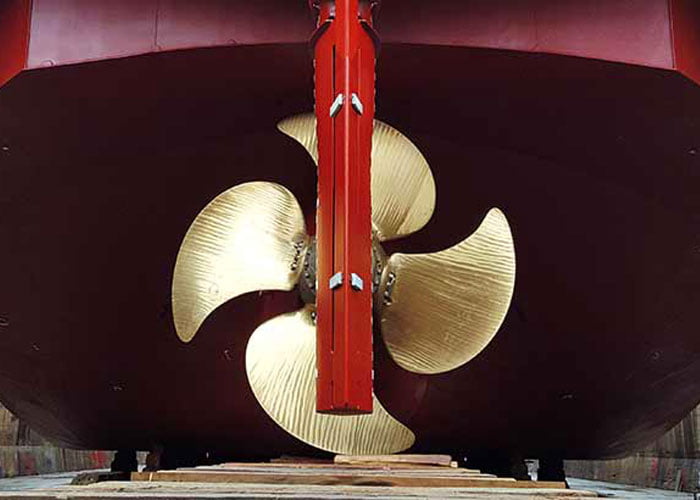
The system usually consists of pairs of copper and aluminium electrodes which are mounted in seachests or strainers and wired to a control panel. In the case of cupro-nickel pipework, a ferrous electrode is used instead of the aluminium electrode.
In operation, the copper electrode produces ions which are carried by the flow of seawater, creating an environment in which barnacles and mussels will not settle or multiply.
By introducing copper ions in very small concentrations, around 2 parts per billion, the WWI system interrupts the settlement sequence of mussel and barnacle larvae.
Instead of adhering to the surface of seachests, strainers and pipework, the larvae pass harmlessly through the cooling water system to the point of discharge.
Without anti-fouling protection, pipes become encrusted with organisms leading to partial or total blockages which reduce the efficiency of the seawater cooling system.
A dual action system
The action of the copper ions is assisted by aluminium hydroxide created by the aluminium anodes which flocculates the released copper from the copper electrodes.
- This highly gelatinous copper-aluminium hydroxide floc is carried throughout the system and tends to spread out into the slow moving areas closer to the pipe surfaces where marine larvae are most likely to settle.
- As a result, marine growth larvae do not settle, instead passing direct to discharge. At the same time, a cupro-aluminium film is built up on the internal surfaces of pipes to suppress corrosion. In this way, the system has a dual action protecting seawater pipework against bio-fouling and corrosion.

Seachest or strainer mounted anodes
When systems are installed at newbuilding, anodes are generally fitted in the seachests using special sleeves or flange mountings.
Alternatively, if systems need to be installed prior to scheduled drydocking, the electrodes can be mounted in the seawater strainers. This also simplifies replacement when electrode renewal becomes necessary.
In special cases, where the WWI system supersedes existing chemical based anti-fouling equipment, the electrodes can be mounted in treatment (electrolysis) tanks in order to economise on the installation costs by utilising existing pipework.
- Steel pipework – protected by copper and aluminium anodes.
- Cupro-nickel pipework – protected by copper and ferrous anodes.
- Seachest mounted anodes – generally installed at newbuilding and are replaced at drydocking.
- Strainer mounted anodes – can be replaced at any time when the vessel is alongside.
- Electrolysis tanks – can be used to replace chemical systems or in specialised applications where seachest or strainer mounting is not possible.
- Environmentally friendly – does not use chemicals. Generally operates with copper concentrations of just 2 parts per billion.
Understanding bio-fouling, breeding and settlement
B
arnacles and mussels breed throughout the year in tropical waters. In temperate regions, the breeding season is concentrated in the spring and autumn.
Without bio-fouling protection, mussels enter the pipework system as larvae and attach themselves to the internal surfaces of pipes where they grow and multiply. This causes a gradual restriction in seawater flow and in more serious cases sections of pipework can be completely blocked and sea valves made inoperable. Blockages can also occur in heat exchangers which seriously reduces their efficiency. As a result, engine cooling systems run at abnormally high temperatures, leading to increased fuel usage which can have a major impact on the running costs of the vessel.

Significant maintenance costs are also involved where complete sections of pipework have to be manually cleaned or replaced, resulting in extended drydocking periods and delays in returning the ship to service.
In addition, the safety of ships can be jeopardised by growth in the pipework systems of fire fighting pumps.
It is estimated that the cost of installing the WWI system is recovered in 2-3 years of operation in terms of savings in maintenance costs.
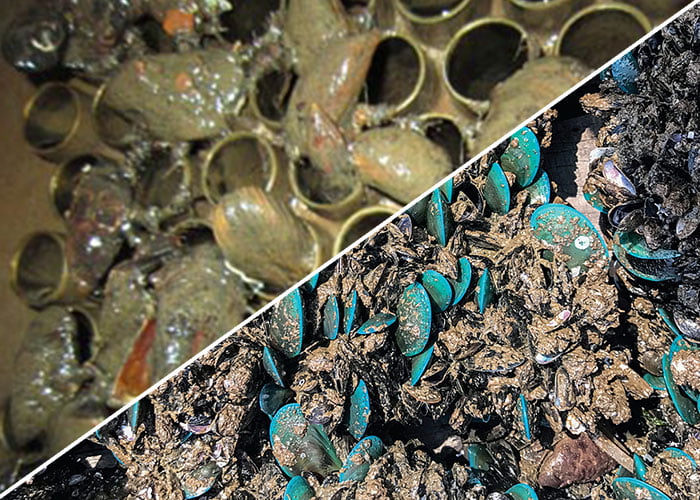
Types of biofouling
Biofouling consists of two separate, but closely related elements:
- Microfouling comprises bacteria and algae such as those seen on heat exchange surfaces.
- Macrofouling organisms include mussels, barnacles and other soft or hard fouling.
Biofouling causes blockages of pipes and valves, a decrease in the efficiency of heat exchange surfaces, increased fluid frictional resistance resulting in increased back pressure and accelerated corrosion. Fouling also interferes with other processes such as filtration and reverse osmosis.
Biofouling and corrosion
Corrosion can be accelerated in two ways.The presence of biofouling on a metal surface results in a decreased oxygen concentration below the fouling layer. This area becomes anodic with respect to areas of the metal surface exposed to oxygenated seawater. The result is pitting corrosion under the fouling. An additional problem is the corrosion caused by the action of bacteria. Sulphate reducing and iron bacteria are well known examples of organisms whose biological activity or metabolic by-products cause corrosion. Such bacteria live in areas of low oxygen concentrations, for instance under a layer of aerobic fouling organisms, or in de-aerated water such as that found in oil storage tanks and well flood water. Efficient fouling control results in reduced pitting and crevice corrosion.
Most WWI systems have dual action, eliminating bio-fouling and suppressing corrosion. In the case of steel pipework the corrosion suppression anodes are made from aluminium, whereas cupro-nickel pipework is protected against corrosion with ferrous anodes.
When these are fitted, corrosion rates are significantly reduced resulting in a longer working for the pipework and any other equipment which is connected to the seawater system.
Applications
T
he WWI’s reputation has been built on providing marine growth prevention systems for some of the biggest fleets of commercial vessels in the world.
With the ability to treat high volumes of sea water, the system is ideally suited to the requirements of the VLCCs, container ships, LNG carriers, Military vessels and numerous other types of ocean going vessels.
For this reason, it continues to be chosen by major operators, reflecting both the effectiveness of the system and the on-going support which is provided to customers.
In operation, the system is automatic and makes very little demands on crew time apart from periodically monitoring the anode outputs. A log sheet monitoring service provided by WWI ensures that systems continue to perform effectively.
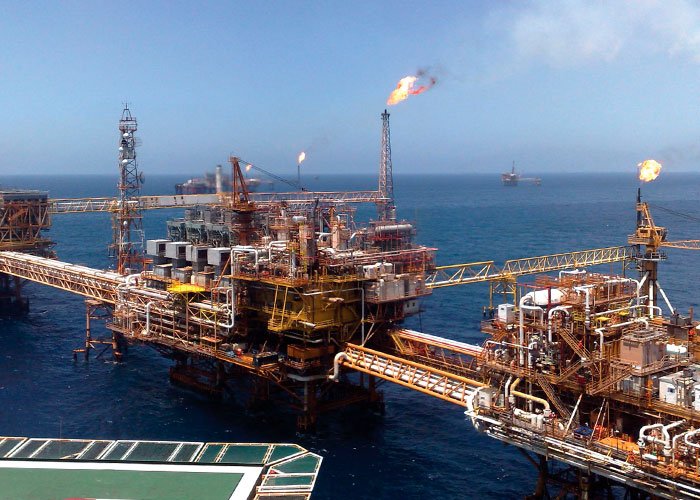
Our systems are designed to be used in various sectors such as:
MARITIME (military & civil vessels) / OFFSHORE RENEWABLE / OIL & GAS / ONSHORE / REFINERIES / FACILITY PORTS / RETROFIT PROJECTS
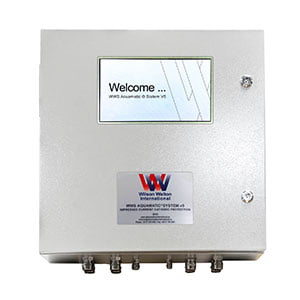
Modular control panels and anodes
Economical and compact in design, modular control panels are easy to install.
A range of electrodes and mounting types are available for all types of vessels.
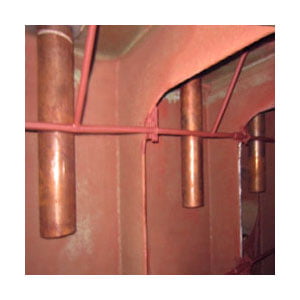
Seachest anodes installations
When systems are installed at newbuilding, electrodes are generally fitted in the seachests using special sleeves or flange mountings.
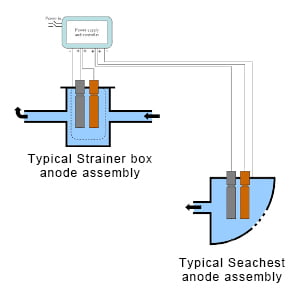
Strainer mounted anodes
If systems need to be installed prior to scheduled drydocking, the electrodes can be mounted in the seawater strainers. This also simplifies replacement when anode renewal becomes necessary.
Related products
CPU or Control Panel
With WWS Praicomatic® v5 System, touch screen panels, comprehensive information about the performance of the system is at your fingertips.
One of the main principles behind the design of the new anti-fouling panels is greater connectivity. The panels produce an MODBUS RTU signal which enables the system to be governed from a more convenient location such as a control room or alternatively the data could be fed to the ship’s bridge computers. Other type of communications, consult.
What’s more, filling in log sheets becomes a thing of the past, because the data can be uploaded to a USB stick and then e-mailed to WWI for detailed analysis.
Design Characteristics
- All functions easily monitored and controlled – saving crew time.
- Automatic data logging provides more comprehensive information for detailed analysis.
- From 2 up to 36 anodes outputs and other configurations upon request.
- Dimensions of panel: 600mm (high) x 210mm (wide) x 600mm (depth).
- Easy placement on bulkhead or deck.
- Visual display inside or on door.
- Input power 220Vac/1pH/50-60Hz & Output 12Vdc and up to 72A
- Will accept AC Input of +/- 16 to 18% as per Stanag 1008.
- The system is designed for ease of use using a visual command line showing the operational instructions.
- There is a separate visual ‘alarm text line’ which displays any alarm or fault condition in readily understandable text.
- Pin number protected configuration mode prevents unauthorised access to control settings.
- Scrolling display lists all the inputs and outputs of the system together with the operational mode information without the need for any user intervention.
- System can be connected to vessel’s computer network MODBUS RTU or another to allow remote monitoring.
- 80% lower weight compared to other TRU.
- 40% lower dimmension compared to other TRU.
- Design in accordance with NES 704 and built to ISO9001 Quality Control.
- Robust design to last the lifetime of the vessel and built to withstand high levels of shock and vibration.
- Minimum maintenance requirements, monthly operational e-reports analysed by WWI engineers.
Alarms Local & Remote
- DC/DC Converter module.
- Temperature
- Anode depletion
Visual parameters in Local & Remote
- Voltage & current anodes
- Temperature
- Control mode (automatic/manual).
- Others (optional).

Cabinet
- IP54 TYPE 12 IK 10, IP66 TYPE 4, 12, 13 IK 10 or TBA
- Colour RAL 7035 or TBA
- EMC & Shock and Vibration absorption means silent block, if required.
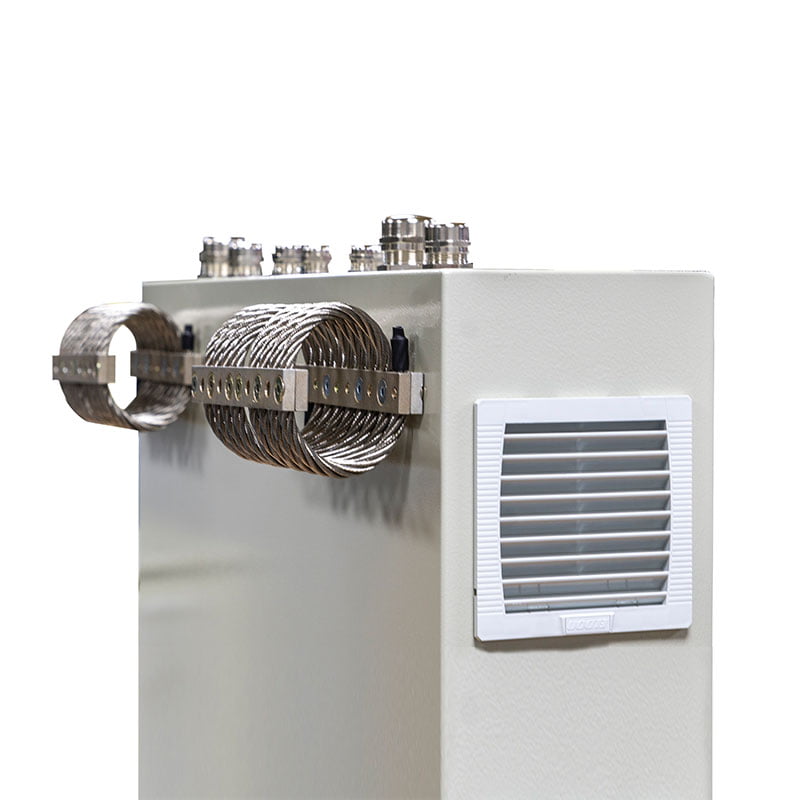
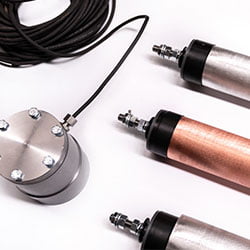
ANODES
WWI has developed a range of anodes with mountings which enable them to be installed in the seachests or strainers of almost any type of vessel.
The size of the anodes is determined by the flow rates and their anticipated design life, taking into consideration the scheduled dry docking period.
Detailed drawings are supplied for every ship to assist in installation and ensure that the anodes are positioned for maximum effectiveness in the seawater flow.
The anodes can be installed using a number of mounting arrangements.
- Steel pipework – protected by copper and aluminium anodes.
- Cupro-nickel pipework – protected by copper and ferrous anodes.
- Anodes with integral cathodes – used where there is no return path for the current in close proximity.
- Seachest mounted anodes – generally installed at newbuilding and are replaced at drydocking.
- Strainer mounted anodes – can be replaced at any time when the vessel is alongside.
- Anodes with dedicated cathode arrangements. Used where strainer bodies are internally lined and the strainer basket is isolated.
WWS Cuproline® , WWS Ferroline® , WWS Aluminasa® and WWS Aloline® Anodes
These are used in the majority of installations to protect steel pipework against bio-fouling through the creation of copper ions.
Standard sizes range from 40mm to 130mm in diameter and 200mm to over 1000mm length. The photograph shows the electrode fitted with a flange mounting arrangement. Other dimmensions upon request.
Aluminium anodes, WWS Aluminasa® or WWS Aloline®
The purpose of aluminium anodes is to assist in anti-fouling process through the production of aluminium hydroxides when protecting steel pipework.They also produce a cupro-aluminium film which acts as an anti-corrosive layer on the internal surfaces of pipes. The electrode is shown with a weld-in mounted sleeve.
Mix purpose anodes, WWS Cuproline® and WWS Aloline® or WWS Aluminasa®
In cases where there is a requirement for anti-fouling and corrosion suppression, but only space to fit one electrode in a strainer, this dual purpose design provides an effective solution.Dual purpose anodes can be produced with either copper/aluminium or copper/ferrous in a single assembly. It is shown here with a teflon mounting which simplifies installation.
